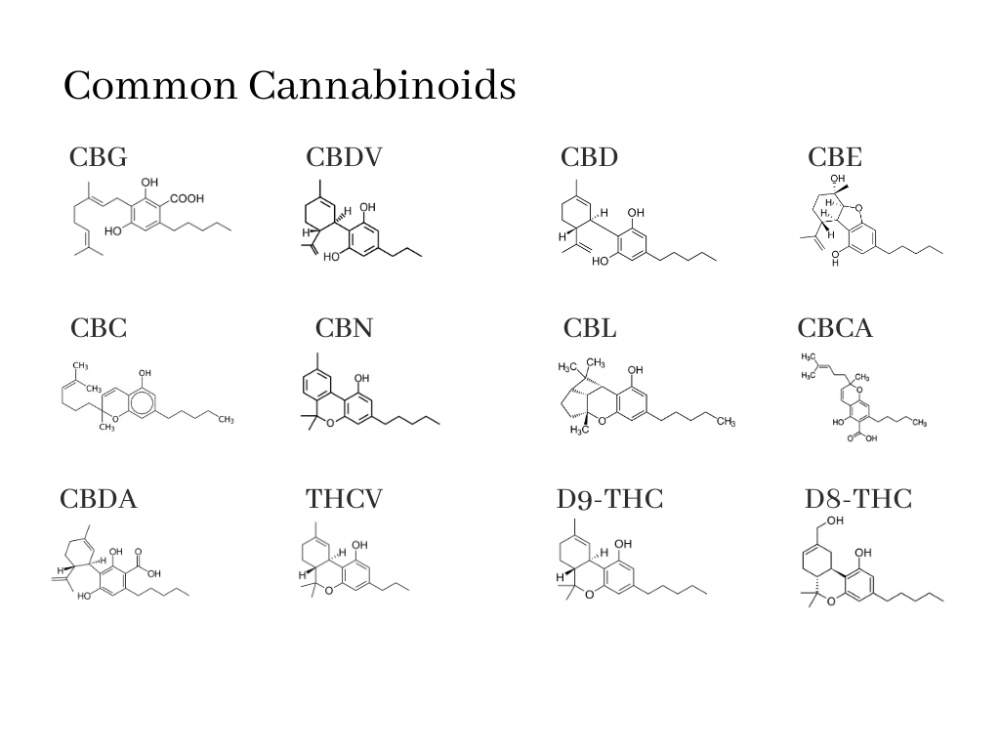
An In-Depth Look at Common Cannabinoids and Their Medical Potential
Cannabinoids are a diverse array of chemical compounds native to the cannabis plant. By interacting with specialized receptors in our body, they produce a multitude of effects that vary from one cannabinoid to another. Although over 100 cannabinoids exist, several key players have been rigorously studied for their medical utility. This article aims to provide a comprehensive understanding of these significant cannabinoids, their mechanisms of action, and their potential medical applications.
Tetrahydrocannabinol (THC): The Dual-Edged Sword
Characteristics
Tetrahydrocannabinol (THC) is the most recognized cannabinoid, primarily due to its psychoactive effects. It interacts predominantly with CB1 receptors in the brain, inducing feelings of euphoria, or the characteristic “high.”
Medical Applications
THC’s analgesic properties make it a candidate for pain relief. It also demonstrates antiemetic effects, beneficial for mitigating nausea and vomiting, and has the potential to alleviate muscle spasms. Its appetite-stimulating and mood-enhancing capabilities further broaden its medical applicability.
Risks and Limitations
However, THC is not without drawbacks. High doses may lead to undesirable effects like anxiety, paranoia, and cognitive impairments. Thus, careful dosage and medical supervision are advisable.
Cannabidiol (CBD): The Non-Intoxicating Therapeutic Agent
Characteristics
Cannabidiol (CBD) stands out as another cornerstone cannabinoid, but unlike THC, it lacks psychoactive effects. It acts on both CB1 and CB2 receptors, which are predominantly found in peripheral tissues and the immune system.
Medical Applications
CBD has proven effective in treating various conditions such as epilepsy, anxiety, chronic pain, and inflammation. Its antioxidant and neuroprotective qualities also render it a potential treatment for neurodegenerative diseases like Alzheimer’s and Parkinson’s.
Safety Profile
Compared to THC, CBD has a favorable safety profile, with minimal reported side effects, making it a more viable option for long-term treatment.
Cannabigerol (CBG): The Parental Precursor
Characteristics
Cannabigerol (CBG) serves as a precursor for other major cannabinoids like THC and CBD. Non-intoxicating in nature, it exhibits a unique set of properties.
Medical Applications
CBG has shown promise in areas ranging from anti-inflammation and antibacterial action to neuroprotection. Its potential applications include treatments for glaucoma, inflammatory bowel disease, certain cancers, and bladder dysfunctions.
Research Gaps
Given its status as a lesser-known cannabinoid, more research is needed to fully validate its medical efficacy.
Cannabinol (CBN): The Aging Byproduct
Characteristics
Cannabinol (CBN) is primarily found in aged cannabis and results from the degradation of THC. While it has mild psychoactive effects, it is less potent than THC.
Medical Applications
CBN has been investigated for its potential as a sedative and may be beneficial for conditions like insomnia. It could also have pain-relieving and anti-inflammatory properties, although research in these areas is still in its infancy.
Final Thoughts
The field of cannabis research is burgeoning, with a growing body of evidence highlighting the medical utility of various cannabinoids. However, understanding their full scope of benefits, mechanisms of action, and potential side effects necessitates further research. Consulting medical professionals for personalized guidance is crucial for the safe and effective use of cannabis for medical purposes.
Note: Always consult with a healthcare provider that is knowledgeable about medical cannabis for optimal results with incorporating cannabis into any treatment plan.
📗 Note: If the diagram’s your first date with cannabis info, consider the book a committed relationship. Say “I do” to “The Doctor-Approved Cannabis Handbook” by clicking here 📗.

Summary Notes
An In-Depth Exploration of Common Cannabinoids and Their Medical Potential
The medical potential of cannabinoids extends far beyond the well-known effects of THC and CBD, encompassing a wide range of compounds like CBG, CBC, CBN, THCV, and CBDV, among others. Each cannabinoid possesses unique properties that can contribute to therapeutic outcomes for a variety of conditions, from pain and inflammation to neurological disorders and cancer.
Understanding the synergistic effects of cannabinoids, often referred to as the entourage effect, is crucial for maximizing their therapeutic potential. This concept highlights how the combination of various cannabinoids can produce more significant benefits than individual compounds alone.
Research into the mechanisms through which cannabinoids exert their effects reveals their multifaceted roles in modulating the endocannabinoid system, a critical regulator of physiological processes and homeostasis. The therapeutic implications of cannabinoids in treating epilepsy, mental health disorders, and neurodegenerative diseases underscore the importance of further investigation and clinical trials.
The safety, pharmacokinetics, and legal status of medicinal cannabinoids remain key considerations in their clinical application. As research advances, so too does the need for comprehensive education and training for healthcare providers on the use of cannabinoid-based treatments.
Patient experiences and advances in cannabinoid extraction, synthesis, and application offer valuable insights into the effectiveness and challenges of cannabinoid therapy. The future of cannabinoid research promises to deepen our understanding of these compounds, paving the way for new therapeutic strategies and enhancing patient care in diverse medical fields.

